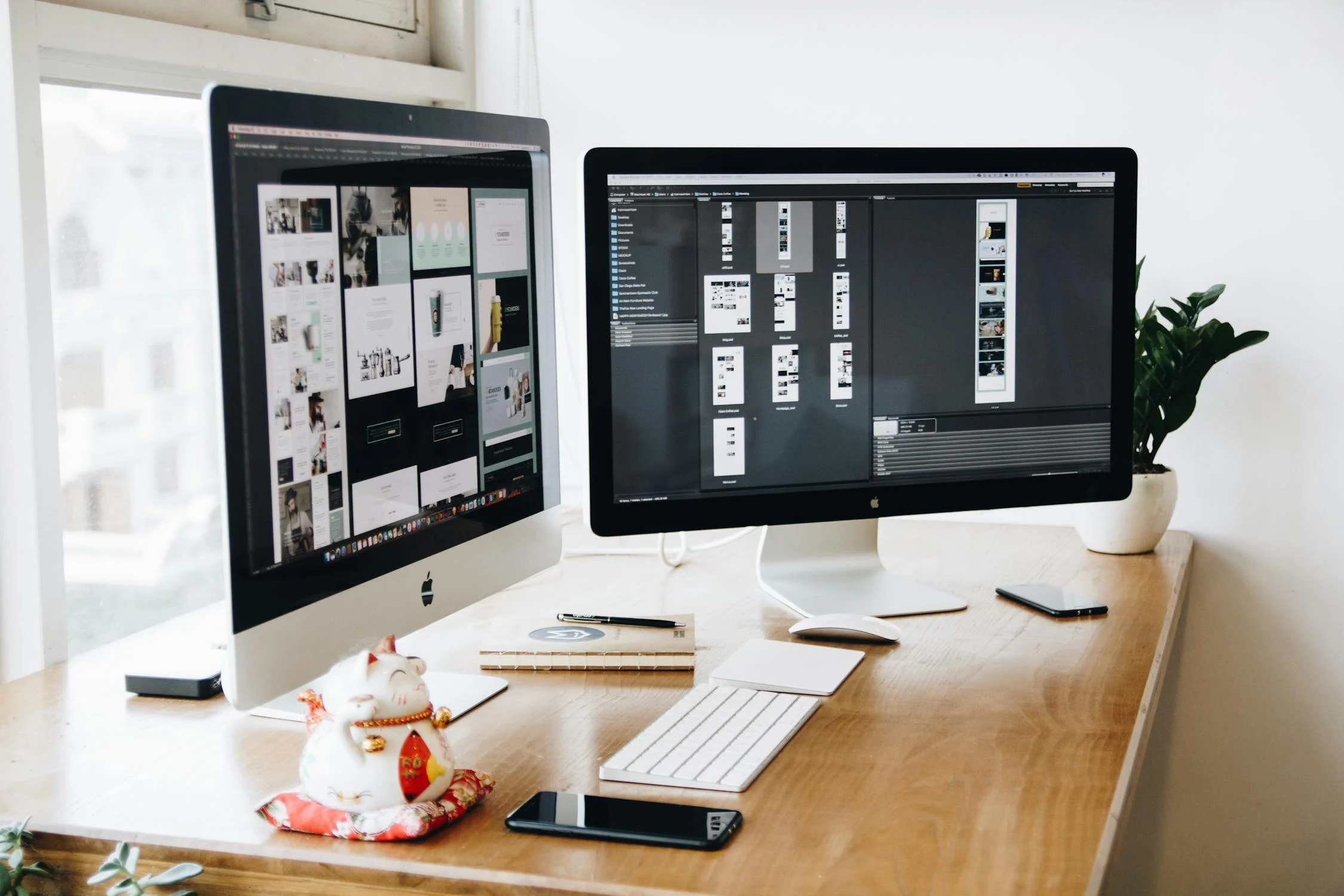But what makes Webflow a game-changer? At its core, Webflow offers a visual canvas, translating your design choices into clean, standards-compliant HTML, CSS, and JavaScript. The interface allows for direct manipulation of website elements, making the design process both fluid and precise. In this article, we'll explore some of the advanced Webflow features.


Custom interactions and animations
Crafting the narrative with animations
Webflow offers a robust timeline editor, giving you control over animation details:
- Trigger-based animations: Set up animations that activate on specific triggers like scrolling into view, clicking, or hovering. This responsiveness makes your site feel alive and interactive.
- Sequential animations: Create sequences where elements animate one after the other, crafting a narrative that unfolds as the user interacts with your site.
- Looped animations: Keep certain elements in perpetual motion for a dynamic background or constantly animated icons.
Enhancing user experience
Animations should always enhance, never distract. You should use animations for:
- Highlight important elements: Draw attention to calls to action, important information, or navigation.
- Indicate interactivity: Use subtle animations to show users what's clickable or interactive.
- Provide feedback: Animations can indicate a process, like a loading bar, or confirm an action, like a button press.
Advanced layout techniques

Webflow offers a playground for experts to experiment with advanced layout options, pushing the boundaries of web design.
Grid and flexbox
Grid: The foundation of complex layouts
The CSS grid in Webflow is a powerhouse for creating intricate and responsive Webflow layouts. Use the grid to:
- Create magazine-style layouts: Perfect for editorial websites where you need to arrange text and images in a compelling way.
- Design portfolio pieces: Showcase your work in an engaging, grid-based gallery.
- Build product layouts: Ideal for e-commerce sites, where you can display products in a clean, organized manner.
Flexbox: The tool for dynamic alignment
Flexbox is your go-to for layouts that require a flexible and efficient way to distribute space among items in a container. It's particularly useful for:
- Create menus that adjust seamlessly across devices.
- Efficiently organize blog posts, testimonials, or service sections.
- Easily center content or distribute space evenly, regardless of the screen size.
CSS grid overlay
Unleashing precision and control
This tool is especially valuable for:
- Intricate web layouts: Where every pixel counts and precision is key.
- Overlapping elements: Create modern, dynamic layouts where text or images overlap but remain harmoniously balanced.
- Visual storytelling: Align your multimedia content in a way that guides the viewer's eye through your narrative in a structured yet creative manner.
Dynamic data and conditional visibility
Leveraging Webflow’s dynamic data features
Creating content that adapts and evolves
Dynamic data in Webflow is akin to having a living, breathing organism as your website. It allows you to:
- Automate content updates.
- Personalize user experiences.
- Manage large content inventories.
Conditional visibility
Crafting a responsive and personalized user experience
Conditional visibility is like having a smart assistant on your site, showing users exactly what they need to see at the right time. Use this feature to:
- Show/hide elements based on user actions.
- Tailor content based on user data and previous behavior/preferences.
- Create interactive help or FAQs section.
Multi-step forms and complex form handling
With Webflow, multi-step forms become less of a chore and more of an interactive dialogue with your visitors.
Breaking down the complex with multi-step forms
Simplifying user input for enhanced experience
Multi-step forms in Webflow are like a well-orchestrated symphony, guiding users through a series of questions in a structured, digestible manner. They are ideal for:
- Lengthy application process.
- User surveys.
- Registration and checkout processes.
Form handling for validation, customization, and user feedback
Crafting a smooth and reliable interaction
Effective form handling is crucial for ensuring data accuracy and providing a hassle-free user experience. In Webflow, form handling encompasses:
- Validation techniques for accurate user inputs.
- Customization for brand and tone consistency.
- Interactive feedback, such as progress indicators, confirmation messages and more.
Integrations with custom code
Webflow’s flexibility shines with its ability to integrate custom code. This section teaches you how to extend Webflow's native capabilities, integrate external APIs, or add custom JavaScript for unique functionalities.
This further opens a world of possibilities, including:
- Expanding functional boundaries of your digital space.
- Enhancing user experience with third-party APIs.
- Customizing SEO and analytics.
- Custom animations and engaging interactions.
- E-commerce enhancements and modifications.
Collaboration and team workflow
Here's how Webflow helps teams collaborate effectively:
Streamlined team collaboration
Webflow brings team members together in a cohesive digital workspace. With real-time collaboration, everyone can contribute simultaneously, like a team of chefs working together in a kitchen, each expertly handling their part of the meal. Role-based access ensures that everyone has the right tools and permissions, just like each chef has their own station and ingredients.
Smart version control
With Webflow, keeping track of changes is easy with version control. If something doesn't work out, or you need to go back to the previous versions, you can do that simply.
Effective communication
Clear communication is key in any team project. Webflow facilitates this by providing straightforward tools for feedback and suggestions. It's like having a group chat where ideas are exchanged, feedback is given, and everyone stays on the same page.
Webflow CMS beyond basics
Webflow CMS offers all sorts of features to save you from many troubles. Beyond its simple, basic offerings, here are some advanced features of Webflow CMS for you to gauge the true strength of this platform:
- Advanced content management: for creating complex structures, like nested categories, or managing diverse content types.
- Personalized user experience: for tailoring content as per your user so that you can make their experience truly personalized.
- Dynamic content relationships: in order to link different content types with ease – like authors to their articles, products to their reviews, and so on, in order to provide a much more interconnected user experience.
- Automated content-driven tasks: for setting up rules for publishing and scheduling so that automation does the mechanistic work and you get time to focus on bigger tasks.
Advanced styling techniques
Webflow provides a rich palette of options, including CSS filters, blend modes, custom cursors, and hover effects. These features are the finishing touches that can transform a good design into a great one.
CSS filters and blend modes
CSS filters and blend modes in Webflow are like the filters and blending tools in photography and graphic design. They allow you to:
- Enhance and modify images with ease.
- Create depth and texture in your images.
Think of these tools as your digital brush and palette, enabling you to create unique visual experiences without leaving the Webflow environment.
Custom cursors and hover effects
Custom cursors and hover effects are the playful side of Webflow's styling capabilities. They add an element of interactivity and surprise that can elevate the user experience:
- Swap the standard cursor for something else that matches more closely with your brand voice.
- Create interactive and engaging hover effects for buttons, texts, and images – provide immediate feedback and make your site look more lively.
These styling techniques are about going beyond the basics to create a website that not only functions well but also has its own distinct character and style.
Final thoughts
Evidently, Webflow is as good for advanced features as it is for basic features. This platform is a powerhouse for designers and developers looking to push the boundaries of what web designing should be.
Frequently asked questions
Can I export and host a website with Webflow features on external servers?
Yes, Webflow allows you to export your site and host it externally, though some dynamic features may require Webflow hosting to function properly.
Do I need special hardware or software to utilize Webflow’s advanced features?
No, you don’t need any special hardware for Webflow, including its advanced features.
Is Webflow more geared towards larger teams, or is it suitable for small businesses or individuals too?
Webflow is suitable for everyone – including individuals, small businesses, and larger teams.

















